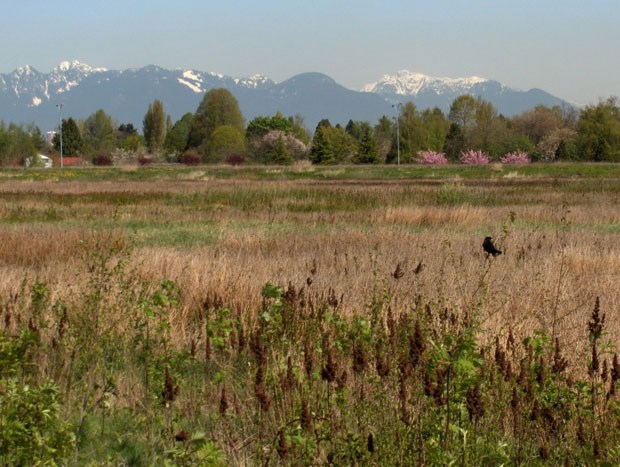Nature and agriculture top the agenda of the three options nailed down by City of Richmond staff for the future of Garden City Lands.
However, none of the choices, which were due to be presented to a city council committee on Tuesday, make mention of any form of sport-related activities — a fear raised earlier this year by Jim Lamond, Richmond Sports Council chair.
The options will be laid out for all to see at a public open house on Thursday, Nov. 7.
And the option ultimately chosen — or a combination of all three — by the parks and recreation committee will form the final concept plan to develop the controversial, 136-acre parcel of land, bought by the city for almost $60 million in 2010.
The main difference between the options is that A focuses on the majority of the site being natural, with a 35-acre urban agriculture component. B and C increase the urban agriculture portion to around 50 acres.
Option A, called “In Nature,” is described in city parks manager Mike Redpath’s report as having a “nature conservation framework.”
This option, says Redpath, focuses on reflecting the existing landscape while creating a “natural sanctuary or experience within the city centre.”
A large naturalized woodlot along the Alderbridge Way edge of the lands is envisaged in A, with an extension of the existing seasonal wetlands forming a storm water retention area.
The raised peat bog, fern “forest,” natural grass and sedge fields on the lands would all be conserved under Option A.
The 35-acre urban agriculture component will consist of a “Community Farm and Sustainability Hub” and multi-purpose community fields on the north edge of the lands.
Option B, called “On the Grid,” slides away from nature a little to focus more on the urban agriculture element.
A larger, 50-acre urban agriculture area is suggested to run through the middle of the site.
This plan breaks the site into one-acre parcels for agriculture plots, community use, gardens and ecological conservation, according to the report.
The final option, C, dubbed “Off the Grid,” suggests a similar focus to Option B, but has a different design approach, most notably placing the Community Farm and fields to the more urban edge along Garden City Road.
As well as the open house on Nov. 7, the three options are being placed on the creategardencitylands.ca and Let’s Talk Richmond websites for public feedback.
Prior to coming up with the options, city staff consulted with the Agricultural Land Commission, the Scientific Advisory Panel for Burns Bog and land and food experts at the University of B.C.
All three options, according to the city staff report, include: natural and water features; agricultural fields; gateways and connections; parkland spaces; interpretive art opportunities and a community hub.
Earlier this year the city set seven guiding principles to help it shape the future use of the lands.
Jim Wright, president of the Garden City Lands Coalition, spoke in favour of the principles, but expressed concerns that the project has, thus far, not delivered on its initial steps.
The lands are locked in the agricultural land reserve and, therefore, can't be developed for residential or commercial use.
Check back here on Wednesday for the latest on this story.



